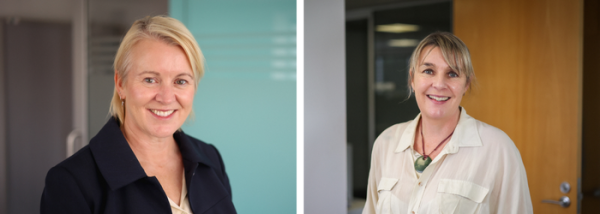The Diversity Agenda is taking collective action to close the gender pay gap.
The gender pay gap and gender participation issues are big, but they’re solvable through collective change.
This is the ethos guiding The Diversity Agenda, which brings businesses in the architecture and engineering sectors together to help close their individual and collective gender pay gaps.
“The Diversity Agenda evolved to tackle the systemic issues that we were seeing in the engineering and architecture sector. The workforce wasn't reflecting the communities that we serve. We were having challenges retaining women, for example,” said steering committee member Helen Davidson.
The Diversity Agenda steering committee chair Josie Fitzgerald says the gender pay gap across the organisation’s engineering and architecture sector members was 13.8% in 2024. This is down from 17% in 2023.
“It demonstrates that across the collective of an organisation, men are paid higher than women and that is really largely to do with the fact that there are more men in senior roles and in leadership positions,” said Josie Fitzgerald.
Every firm that joins up to The Diversity Agenda signs the Accord, meaning the leader of their organisation holds themselves personally accountable for shifting the dial in their organisation. The leaders come together every year to share their gender pay gap reporting data, as well as other statistics such as ethnic representation, industry newcomers, and retention rates.
“That peer-to-peer accountability is a really powerful tool that we have in The Diversity Agenda. It's about firms walking into that room but taking off their competitor hats.” — Helen Davidson

From left to right: The Diversity Agenda’s Josie Fitzgerald (chair) and Helen Davidson (steering committee member).
“We don’t shy away from it”
Wellington-based small business Tennant Brown Architects has a gender pay gap that fluctuates – it’s currently sitting at around 20%.
“Initially I thought, we're doing this terribly. But I can see it's because we've got two older directors – I'm one of them – who are earning more than others, which really puts things out of sync,” said director Ewan Brown.
“I have to push against myself all the time. One thing I have learned is that the smaller you are, it makes it really, really hard cause one person coming or going makes a massive difference to your stats. The thing I like about it is I'm competing with myself,” said Ewan Brown.
Studio Pacific Architects’ Principal Julie Stewart values the collaborative approach.
“I'm an architect, I'm not a diversity and inclusion specialist. So, being able to lean on and learn from the collective energy at The Diversity Agenda has been invaluable. Over time, we think that we're creating an organisation that will support more diverse leadership, which will help to close that overall gender pay gap,” said Julie Stewart.
“We have a whole series of initiatives like supporting flexible working, supporting technology to allow people to work in different spaces and at different times. One of the really important things that we do is we spend time together having those hard conversations. We don't shy away from it.”
The message from engineering consultancy DETA is to embrace the challenge.
“It was a little bit scary at the start. The data's quite confronting. Everyone thinks they're doing a great job on this, and then when you see the data in front of you, it is scary,” said DETA’s Jonathan Pooch.
“As a male leader, my job is to get the absolute best out of every single person in our team and to help the business be the best it can possibly be.” — Jonathan Pooch

From left to right: Ewan Brown of Tennent Brown Architects, Julie Stewart from Studio Pacific Architects and Jonathan Pooch from DETA.
It’s about the collective
Helen Davidson encourages other collectives to start measuring their gender pay gaps.
“The gender pay gap is a really great place to start, because it is something that you can do tomorrow with commitment. Are there challenges? Yes. It costs money. It’s a new way of thinking. You have to work through it. But ultimately the investment will serve you well and bring back a great return on investment into the future because you're going to have an engaged workforce who know their values, them and who will want to stay,” Helen Davidson said.
Chair Josie Fitzgerald sums up the approach, “For The Diversity Agenda, it is about the collective. We're all coming together to solve a challenge across our sector.
“Individual firms’ actions and strategies are critical for the bigger picture, because that's how we actually drive change — by individual firms taking actions."
